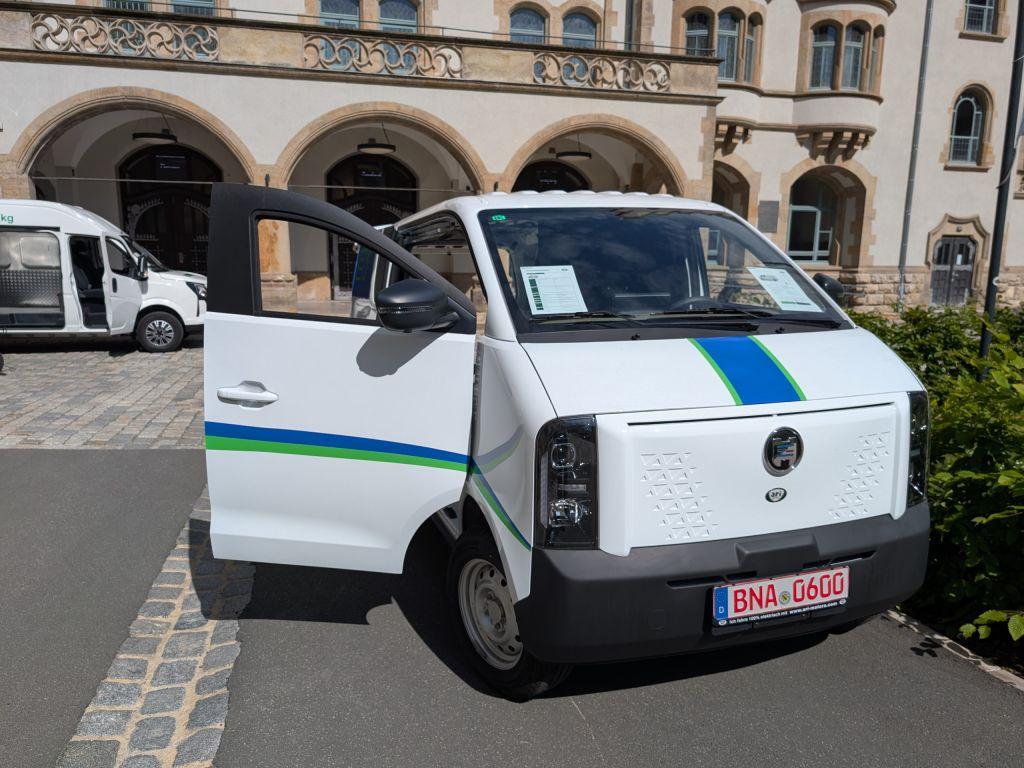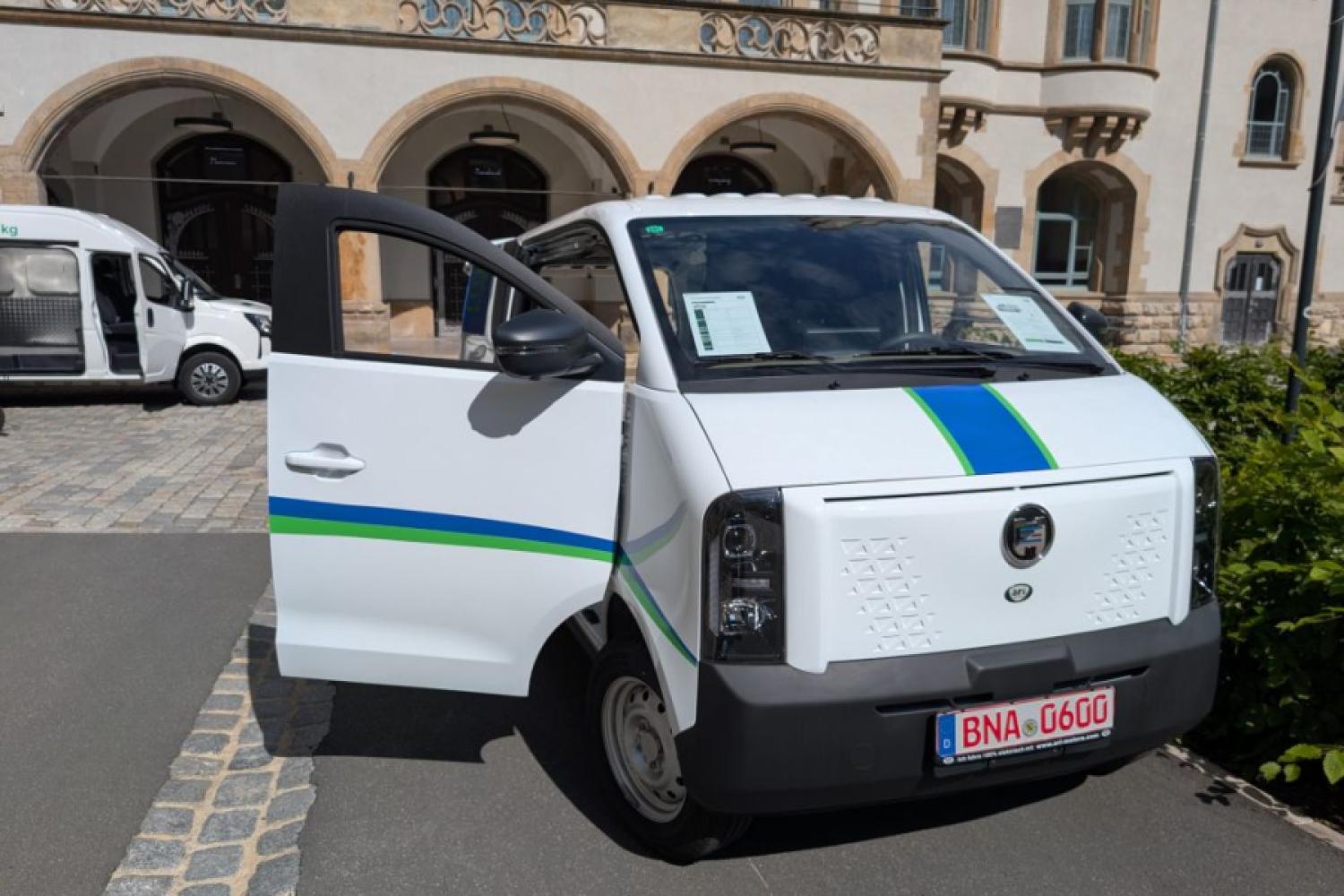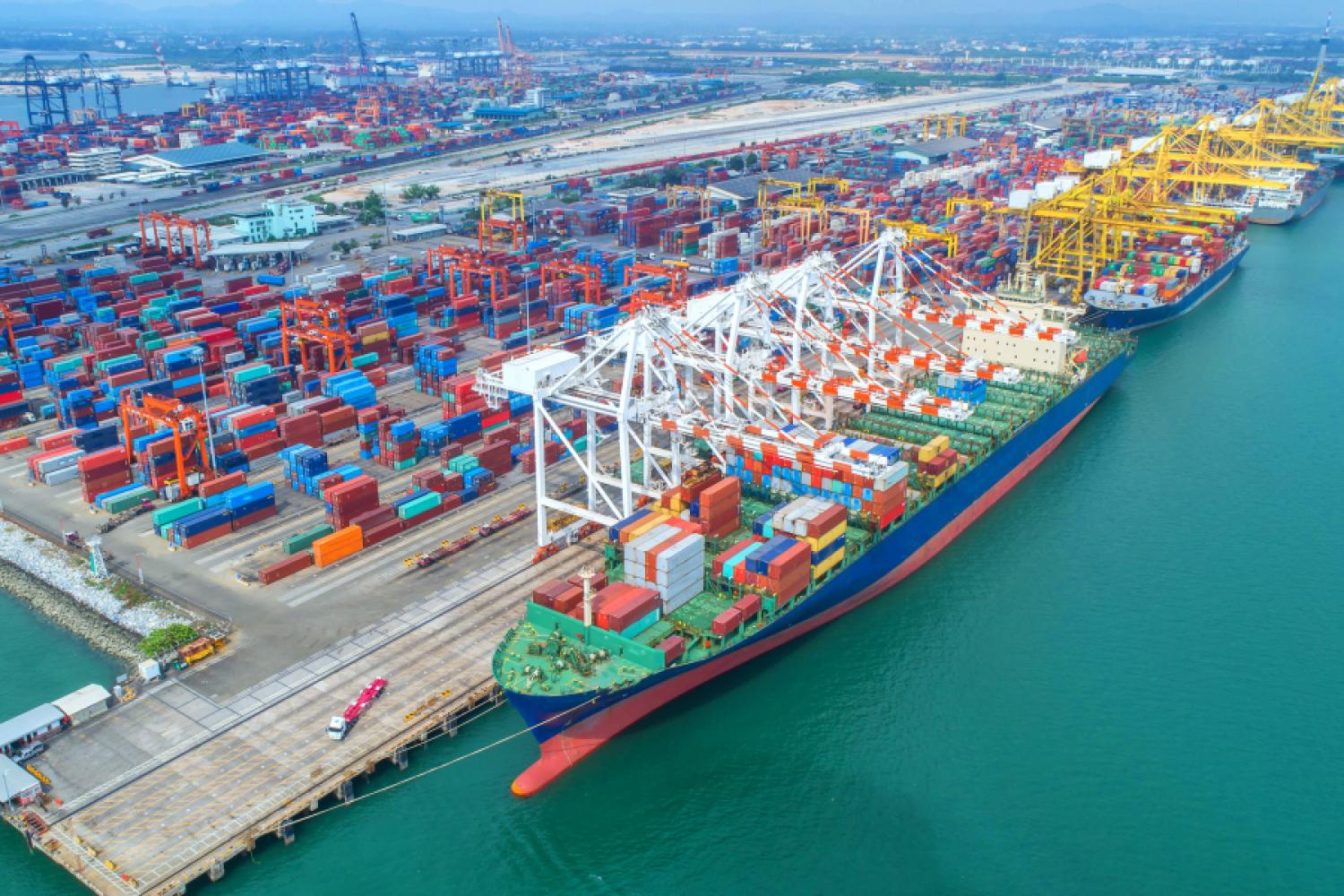The products themselves cannot be the issue: Ari Managing Director Thomas Kuwatsch doesn't beat around the bush; he simply doesn't understand the glaring purchasing reluctance and e-scepticism of the Teutons. The Leipzig-based company taps into the enormous range of Chinese manufacturers' offerings and adapts the vehicles for Europe at an almost unbeatable price and good quality. The latest catch from the Middle Kingdom: the Ari 901 XL, an e-van with dedicated urban profiling. Unlike the combustion engine-derived Ari 1710, a Dongfeng V5, the transporter is based on a pure electric platform. This is noticeable during the short inspection at the Smart City Logistics Congress in Jena.
Ultra-short flat nose, long wheelbase, high space efficiency, spacious cabin. After all, the 60 kW permanent synchronous motor on the rear axle takes up hardly any space. And the moderate but fully adequate 42 kWh lithium iron phosphate battery from the battery giant CATL easily fits into the underfloor. It's supposed to ensure a range of 301 kilometers, which seems realistic given a consumption of 14.9 kWh/100 km, even during the first test run. Charging is done with AC type 2 and DC CCS, taking six hours for a full charge on AC and one hour on DC.
The setup
is already a good fit. But the highlight of the 901 XL is the cargo space: it offers 6.3 cubic meters on the length of a Caddy Maxi at 4.86 meters, measures a slim 1.75 meters in width, and remains underground garage-friendly at 1.99 meters high. The small battery has several advantages: besides the affordable price, with the 901 starting almost fully equipped at a net 32,990 euros or 614 euros for leasing, it gives the e-van a hefty payload of 1,375 kilograms, thanks to an almost ascetic curb weight of 1.5 tons for a BEV. It also comes with a decent towing capacity of 1,200 kilos.
Side opening without B-pillar
A major advantage is certainly the B-pillar-free side access, which significantly eases the loading of bulky goods. Furthermore, the manufacturer from China, whom Thomas Kuwatsch does not fully disclose, has provided a generous recess on the passenger side, allowing the loading length to be stretched from 2.83 meters to 4.10 meters when the original sliding partition is pulled back, the passenger seat is folded down, and unfortunately, the not-very-robust back is loaded. Incidentally, one can step through easily thanks to the completely flat floor.
The width is also decent at 1.63 meters, as is the
interior height of 1.39 meters, indicating a low load edge, unlike the combustion engine-based 1710 with its extremely high cargo space. However, at the rear, one might wish for a wing door instead of the flap, but the wide side compensates for this.
On the road, another advantage of the pure electric base quickly becomes evident, which employs a McPherson at the front and a simple yet robust rigid axle at the rear: the turning circle is extremely compact at just under eight meters, allowing you to effortlessly twist through downtown Jena. It accelerates quickly from the lights, the motor hums along cheerfully without becoming intrusive, in stark contrast to the loud, sometimes even booming brushless unit in the 1710. A single-stage recuperation usually eliminates the need for braking; if necessary, front discs and rear drums ensure adequate deceleration. The foot-operated parking brake, reminiscent of the old Mercedes Vito, and the "ignition key" seem anachronistic given the electric base, but these are merely quibbles.
More robust suspension and handling
In terms of suspension, the 901 doesn't quite compare to the finesse of European or Korean e-vans. The steering is light to operate, albeit without much feedback, the suspension is rather on the "honest" side, and the
body is not the stiffest, not necessarily inspiring driving fun. But you get the hang of it and quickly recognize the 901 as an affordable, straightforward "tool" for transporting freight. The 100 km/h top speed is more than enough, especially since wind and rolling noise become quite loud then. The two digital displays provide the necessary information, such as economical consumption, and the center display includes a rearview camera. Bluetooth, hands-free set, central locking, and heating are included; only the air conditioning costs extra. An optional roof rack or solar panel is available to support electrical consumers. There are plenty of well-formatted compartments, materials and workmanship could be described as pragmatic, and the seats are reasonably comfortable for short distances.
Overall, the 901XL is a pragmatic vehicle that offers the sober capacities of a VW eTransporter or Ford E-Transit Custom at an affordable price. Of course, the competition in the Far East is not idle: the new Kia PV5 was recently introduced—and it too starts at 33,000 euros net, although with 4.4 cubic meters in the base but naturally at a significantly higher technical level. Nevertheless, anyone looking for an affordable e-van for urban transportation will also find one in Leipzig/Borna. As mentioned, the e-scepticism is






